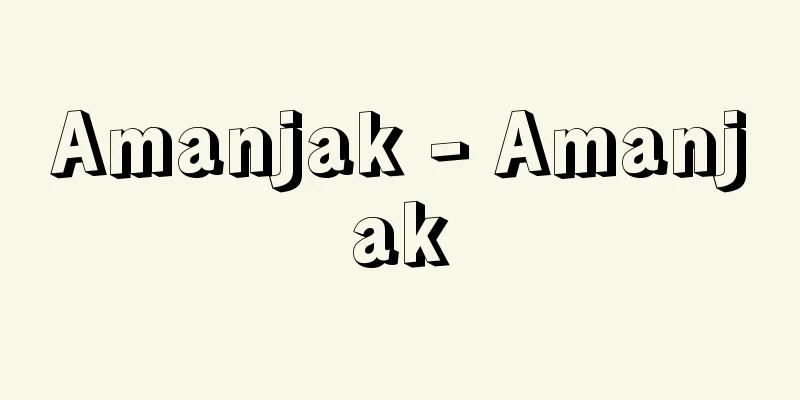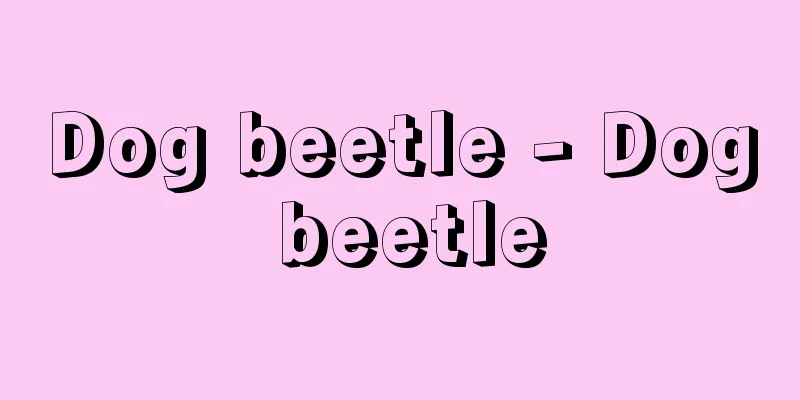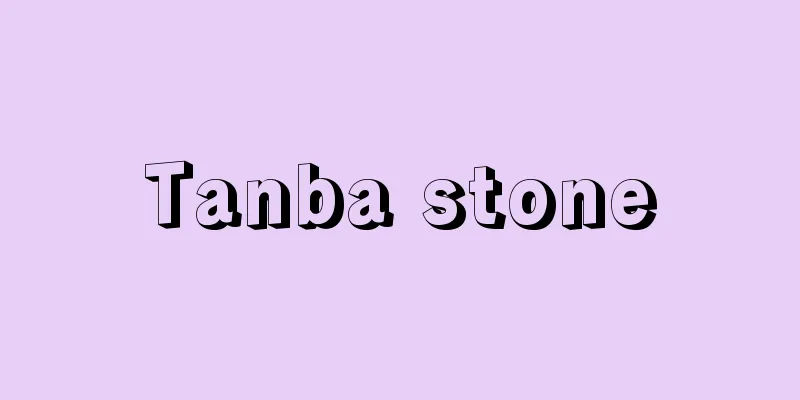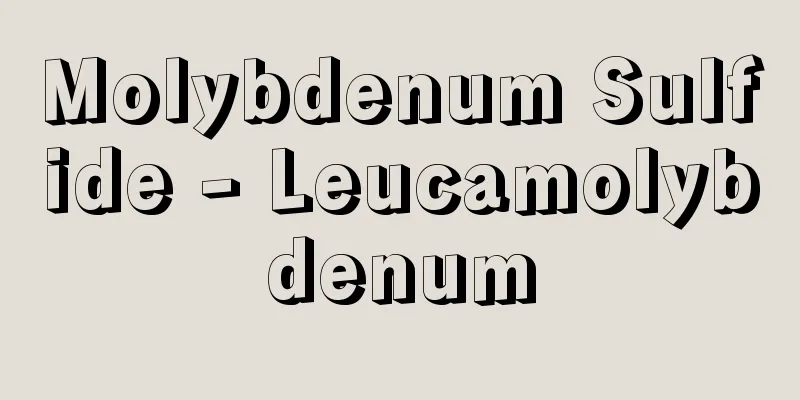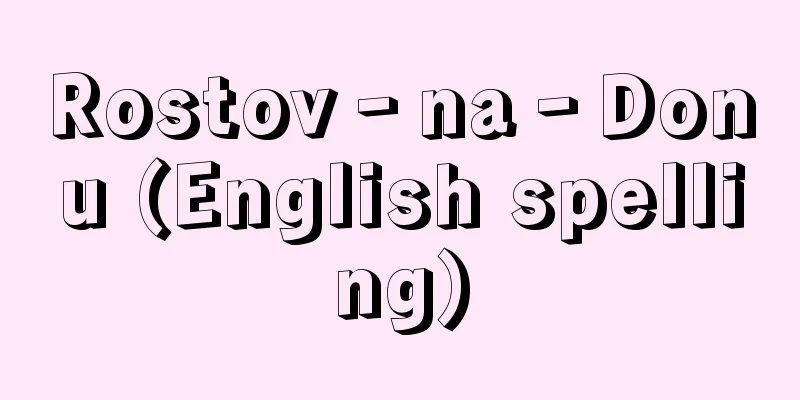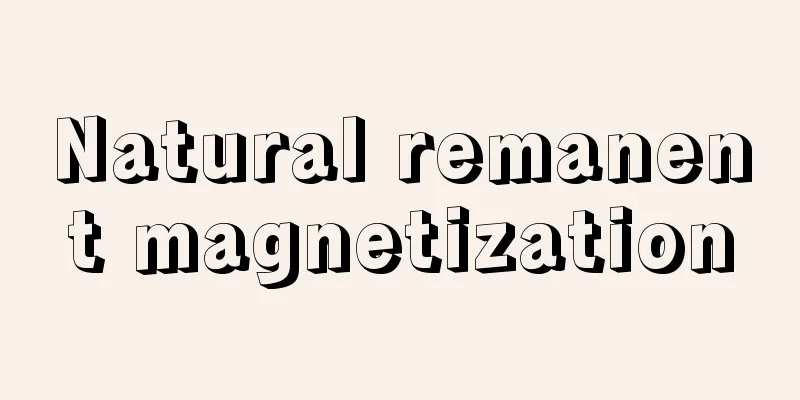Body Transformation - Body Transformation
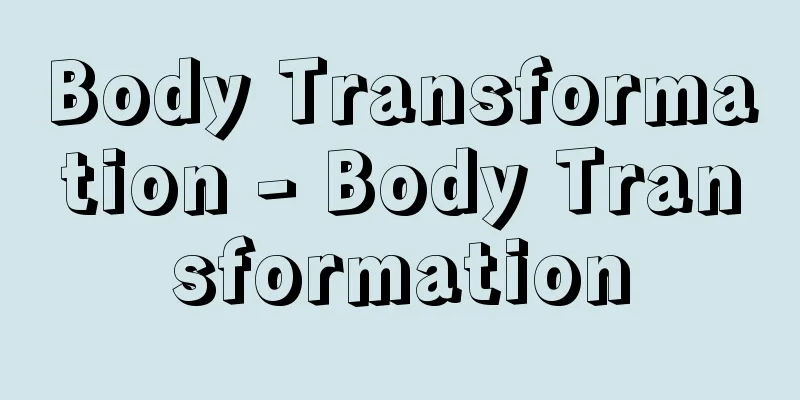
|
Surgical modification of a natural part of the body. This is a custom that is almost universal in human society, and examples of this include tattoos and piercings, but among primitive peoples, various other types of modification are also practiced. The styles can be roughly classified into the following four types. [Yamamoto Matori] Cutting or removing a body partThe treatment mainly targets fingers, teeth, and genitals. The custom of ritually amputating fingers not only exists among ethnic groups around the world, but also includes traces of amputated fingers found on hand impressions made on cave paintings from the Late Paleolithic period in Europe. In New Guinea, women also have the custom of amputating one finger each time a close relative dies. Teeth are often extracted, chipped, or modified as a sign of coming of age or marriage. Among the Australian aborigines, there is a custom of breaking off teeth at the coming of age ceremony, and in Bali, teeth are filed to make them sharp like fangs. Circumcision, the modification of male genitals, is widespread throughout the world, including among Jews and Muslims, and there are various methods of the procedure. In Asia, there was also a custom of castration, and those who served in the royal court after undergoing this surgery were called eunuchs. Circumcision for women involves the removal of the clitoris, and although there are far fewer cases of this than for men, it can be seen in Africa and other places. [Yamamoto Matori] Transforming a body partBadaung women in Burma stack rattan wrapped in brass around their necks to make them longer. Among Native Americans, the custom of pressing a board against a baby's forehead to give it a long, pointed head was widespread. There are also many customs in which a belt is tightly fastened around the waist to make the body extremely thin. In Europe and the United States, corsets with whalebone were used to create a slim waist for women. Foot binding by Chinese women is also a similar style. [Yamamoto Matori] EarringsPiercing ears to wear earrings is a common custom, but Indian women also pierce the wings of their noses to wear jewels. In New Guinea, Africa, South America, and other places, people pierce not only their ears and wings of the nose, but also their septum, lips, and cheeks to insert pieces of wood, bones, and bird feathers. There are also customs that combine this with body transformation methods, in which holes are pierced and then inserted to change the shape of the body. In the Caroline Islands, ear holes are widened and stretched so that they hang down to the shoulders as if a string were hanging down. In Africa, some people pierce their lips and insert wooden plates into them, gradually changing them to larger and larger objects until they resemble a duck's beak. [Yamamoto Matori] Tattoo (Bunshin, Irezumi, Irezumi)There are two types of tattoos: puncture tattoos, in which a pigment is rubbed into a wound to create a design, and cicatricial tattoos, in which a design is created by intentionally creating raised scars. The former are found all over the world, but the most famous are the geometric designs applied to the entire body of the Marquesas Islanders in Polynesia, and the spiral designs applied to the faces of the Maori. Some tattoos, like those in Japan and China, use multiple colors, but those in Polynesia are one color and are made with coconut charcoal. The latter type of cicatricial tattoos is often seen in Africa and Australia, and those of the Nuba people of Africa are particularly famous. These treatments of imprinting artificial marks on the body, in other words, body modification, are often closely related to initiation rites (ceremonies of joining or joining the family). Circumcision and tattooing are typical examples, and many ethnic groups include circumcision and tattooing in their coming-of-age rites for a group of boys of the same age. There are also societies in which circumcision and tattooing themselves are considered to be a sign of a man. In the case of girls, the treatment is performed at the time of menarche (first menstruation) or childbirth, and may be seen as a sign that they are available for marriage or that they are married. Performing some kind of treatment on babies and young children has the meaning of initiation, making the child a member of human society rather than nature. When we ask ethnic groups who practice body modification why they do so, we often get the answer that without the modification, it would be indistinguishable from animals. However, it is possible to interpret body modification as primarily a cultural marking of a natural body by applying artificial processing, and thus making it a member of human society. Similarly, body modifications specific to tribes, clans, or lineages may indicate that one belongs to a particular social group, or may be a mark of having attained the status of a full-fledged adult after a coming-of-age ceremony. In societies with strict hierarchical differentiation, special body modifications may be permitted only to certain people of a higher class, with the purpose of distinguishing them from others. In any case, it is reasonable to think that by undergoing the treatments prescribed by society, one becomes a social being based on the worldview of that society. In recent years, piercing and tattooing various parts of the body has become popular, especially in Western societies. At first glance, this may seem unrelated to initiation or social belonging, but it can also be said to contain a high degree of social meaning in that society interprets it as something more than simply an aesthetic preference, and that individuals undergo the tattooing in anticipation of this. [Yamamoto Matori] [References] | | |Source: Shogakukan Encyclopedia Nipponica About Encyclopedia Nipponica Information | Legend |
|
自然のままの身体の一部に外科的な変形加工を行うこと。人類社会にほぼ普遍的に存在する習慣で、たとえば、いれずみ、ピアスなどもこの一種であるが、未開社会の民族の間ではほかにもさまざまな変工の施術が実行されている。その様式はほぼ次の四つに分類することができよう。 [山本真鳥] 身体の一部を切断・切除するもの主として手指、歯、性器などがこの施術の対象となる。手の指を儀礼的に切断する習慣は、世界各地の民族の間に存在するのみならず、古くはヨーロッパ後期旧石器時代の洞穴壁画に押された手型に指を切断したらしい跡をみることができる。ニューギニア島には女性が近親者の亡くなるたびに指を1本ずつ切断する慣習もみられる。歯に関しては成人や結婚のしるしとして抜歯や欠歯または加工を行うものが多い。オーストラリア先住民の間では成人式に際し歯を折り取る風習があり、またバリ島では歯をやすりでこすって牙(きば)のようにとがらせる。男子の性器を加工する割礼はユダヤ教徒やイスラム教徒をはじめとして全世界に広く分布しているが、その施術にはさまざまの方法がある。またアジアにはかつて去勢の慣習があり、この手術を受けて宮廷に仕えた者を宦官(かんがん)といった。女子の割礼は陰核を切除するもので、男子に比べて例はかなり少ないが、アフリカなどにみることができる。 [山本真鳥] 身体の一部を変形するものビルマのバダウン人の女性は、真鍮(しんちゅう)でくるんだ籐(とう)を首に積み重ねるように巻いていき、首を長くする。アメリカ先住民の間には、赤子の額に板を押し当てて後頭部をとがらせた細長い頭にする習慣が広くみられた。またベルト状のもので腰部をきつく締め付けて極端に細く変形する習俗も多くみられる。欧米では女性のくびれた腰をつくりだすために鯨のひげ入りのコルセットが用いられた。また中国女性の纏足(てんそく)もこの様式に類するものである。 [山本真鳥] ピアス耳飾りをつけるために耳に穴をあけるのは広くみられる習慣であるが、同様にインドの女性は鼻翼に穴をあけて宝石をつける。またニューギニア島、アフリカ、南米などでは、木切れ、骨、鳥の羽などを差し込むために、耳、鼻翼のみならず、鼻中隔、唇、ほおなどにも穴をあける。さらに身体を変形する方法との組合せで、穴をあけたあとに物を差し込んで形を変える習慣もある。カロリン諸島では、耳にあけた穴を広げて延ばし、肩近くまで紐(ひも)が垂れたかのごとくにしていた。またアフリカには唇に穴をあけてそこに木の皿を差し込み、だんだん大きな物とかえていくことによって、まるで鴨(かも)の嘴(くちばし)のようにする民族もいる。 [山本真鳥] いれずみ(文身・入墨・刺青)文身(ぶんしん)には、傷に顔料を擦り込んで文様をつける刺痕(しこん)文身と、わざと盛り上がるような傷跡をつけて文様を描く瘢痕(はんこん)文身とがある。前者は世界中にみられるが、なかでもポリネシアのマルケサス諸島民の全身に施した幾何文様の文身、マオリ人の顔面に施した螺旋(らせん)文様の文身は有名である。日本や中国のように多色を用いるものもあるが、ポリネシアのものはヤシ殻の炭を用いた一色である。後者の瘢痕文身はアフリカやオーストラリアにしばしばみられ、アフリカのヌバ人のものがとくに名高い。 この人為的なしるしを身体に刻みつける施術、すなわち身体変工は、イニシエーション(加入礼、入社式)儀礼と密接に関連するものが多い。割礼や文身はその代表的なものであり、同年齢の数人の男児の集団に成人式の儀礼を行う際、割礼や文身をそれに含めて行う民族は多い。また割礼や文身そのものが一人前の男性としてのしるしとみなされている社会もある。女子の場合は初経(初潮)や出産などに際して施術を行い、結婚可能なしるし、ないし既婚のしるしとする場合もある。赤子や幼児になんらかの施術を施すのは、子供を自然ではなく人間社会に属するものとするイニシエーションの意味をもっている。 身体変工を行う民族にそのわけを尋ねると、加工をしていないと動物と区別ができなくなってしまうという答えをしばしば得るが、身体変工は第一に、自然のままの体に人為的な加工を施すことによって文化のしるしをつけ、人間社会に属するものとすることであるという解釈が成り立つ。同様に、部族、氏族、リネージ(系族)に特有の身体変工により特定の社会集団に属すことを示す場合もあるし、成人式を経ての一人前の大人という地位を得たしるしとなることもある。また、階層分化の厳しい社会では、特殊な身体変工が上層の特定身分の人にだけ許されていて、他の身分から区別することを目的としている場合もある。いずれにしても、社会の定めた施術を身体に施すことによって、その社会の世界観に基づく社会的存在となると考えてよかろう。近年欧米社会を中心に、身体のさまざまな部位へのピアスや入墨が流行しているのは、一見イニシエーションや社会的帰属とは無縁のようにみえるが、単に本人の審美的趣味以上の意味を社会が読みとったり、また本人がそれを予期して施術したりする点で、やはり社会的意味を高度に内包しているといえる。 [山本真鳥] [参照項目] | | |出典 小学館 日本大百科全書(ニッポニカ)日本大百科全書(ニッポニカ)について 情報 | 凡例 |
Recommend
I filament - I filament
…At this time, the rod-shaped part forms the axis...
Beggars' Gang - Kobikidan
The name given to the people of the Netherlands wh...
VAPP
...First, the Proletkrit was the parent organizat...
Cutting - Cutting
A technique in which a large piece of cloth is cut...
Rihei Shimizu
Years of birth: unknown. A tayu of kojoruri from t...
Summer -
①The oldest legendary dynasty in China ②One of the...
rabāb al-mughanni (English spelling) rababalmughanni
...The first type is one in which a long neck pen...
Sore - Grass
〘Noun〙① A disease such as eczema that develops on ...
Walter Hasenclever
German playwright and poet. Born in Aachen. Studi...
Natural theology - theologia naturalis
A branch of Christian theology that seeks to under...
Zebu (Humpback Cow) - Zebu (English spelling)
A type of cattle with a protuberance on the should...
Simple printing - Simple printing
Please see the "Light Printing" page. S...
Plywood - Gohan (English spelling)
Wood is peeled into thin boards, and an odd numbe...
Oie
〘Noun〙 ("O" is a prefix) 1. An honorific...
thunderstorm cell
...the height of a thundercloud, expressed as its...

